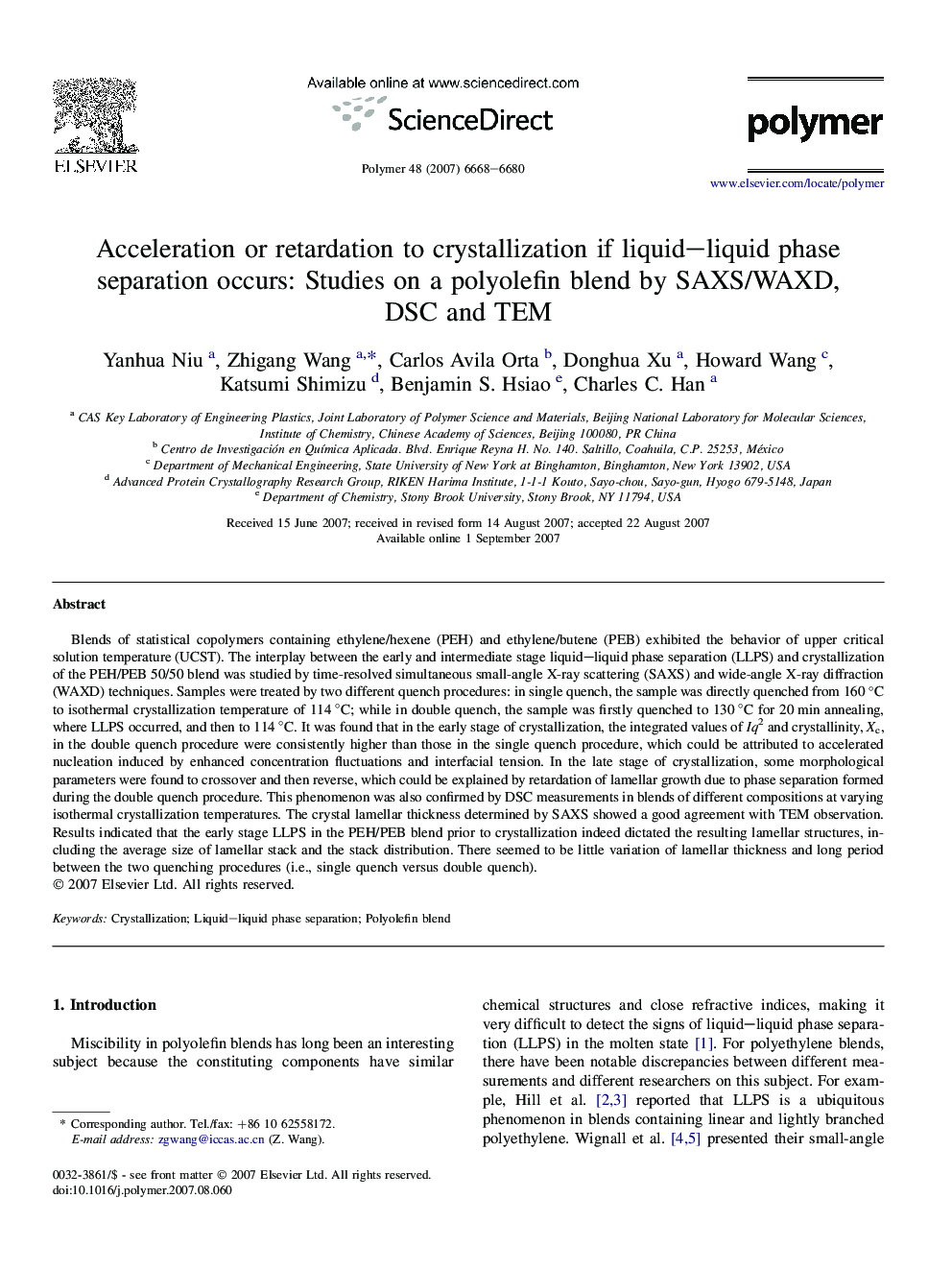| Article ID | Journal | Published Year | Pages | File Type |
|---|---|---|---|---|
| 5188404 | Polymer | 2007 | 13 Pages |
Abstract
Blends of statistical copolymers containing ethylene/hexene (PEH) and ethylene/butene (PEB) exhibited the behavior of upper critical solution temperature (UCST). The interplay between the early and intermediate stage liquid-liquid phase separation (LLPS) and crystallization of the PEH/PEB 50/50 blend was studied by time-resolved simultaneous small-angle X-ray scattering (SAXS) and wide-angle X-ray diffraction (WAXD) techniques. Samples were treated by two different quench procedures: in single quench, the sample was directly quenched from 160 °C to isothermal crystallization temperature of 114 °C; while in double quench, the sample was firstly quenched to 130 °C for 20 min annealing, where LLPS occurred, and then to 114 °C. It was found that in the early stage of crystallization, the integrated values of Iq2 and crystallinity, Xc, in the double quench procedure were consistently higher than those in the single quench procedure, which could be attributed to accelerated nucleation induced by enhanced concentration fluctuations and interfacial tension. In the late stage of crystallization, some morphological parameters were found to crossover and then reverse, which could be explained by retardation of lamellar growth due to phase separation formed during the double quench procedure. This phenomenon was also confirmed by DSC measurements in blends of different compositions at varying isothermal crystallization temperatures. The crystal lamellar thickness determined by SAXS showed a good agreement with TEM observation. Results indicated that the early stage LLPS in the PEH/PEB blend prior to crystallization indeed dictated the resulting lamellar structures, including the average size of lamellar stack and the stack distribution. There seemed to be little variation of lamellar thickness and long period between the two quenching procedures (i.e., single quench versus double quench).
Related Topics
Physical Sciences and Engineering
Chemistry
Organic Chemistry
Authors
Yanhua Niu, Zhigang Wang, Carlos Avila Orta, Donghua Xu, Howard Wang, Katsumi Shimizu, Benjamin S. Hsiao, Charles C. Han,
